The methyl binding domain 3/nucleosome remodelling and deacetylase complex regulates neural cell fate determination and terminal differentiation in the cerebral cortex
- PMID: 25934499
- PMCID: PMC4432814
- DOI: 10.1186/s13064-015-0040-z
The methyl binding domain 3/nucleosome remodelling and deacetylase complex regulates neural cell fate determination and terminal differentiation in the cerebral cortex
Abstract
Background: Chromatin-modifying complexes have key roles in regulating various aspects of neural stem cell biology, including self-renewal and neurogenesis. The methyl binding domain 3/nucleosome remodelling and deacetylation (MBD3/NuRD) co-repressor complex facilitates lineage commitment of pluripotent cells in early mouse embryos and is important for stem cell homeostasis in blood and skin, but its function in neurogenesis had not been described. Here, we show for the first time that MBD3/NuRD function is essential for normal neurogenesis in mice.
Results: Deletion of MBD3, a structural component of the NuRD complex, in the developing mouse central nervous system resulted in reduced cortical thickness, defects in the proper specification of cortical projection neuron subtypes and neonatal lethality. These phenotypes are due to alterations in PAX6+ apical progenitor cell outputs, as well as aberrant terminal neuronal differentiation programmes of cortical plate neurons. Normal numbers of PAX6+ apical neural progenitor cells were generated in the MBD3/NuRD-mutant cortex; however, the PAX6+ apical progenitor cells generate EOMES+ basal progenitor cells in reduced numbers. Cortical progenitor cells lacking MBD3/NuRD activity generate neurons that express both deep- and upper-layer markers. Using laser capture microdissection, gene expression profiling and chromatin immunoprecipitation, we provide evidence that MBD3/NuRD functions to control gene expression patterns during neural development.
Conclusions: Our data suggest that although MBD3/NuRD is not required for neural stem cell lineage commitment, it is required to repress inappropriate transcription in both progenitor cells and neurons to facilitate appropriate cell lineage choice and differentiation programmes.
Figures
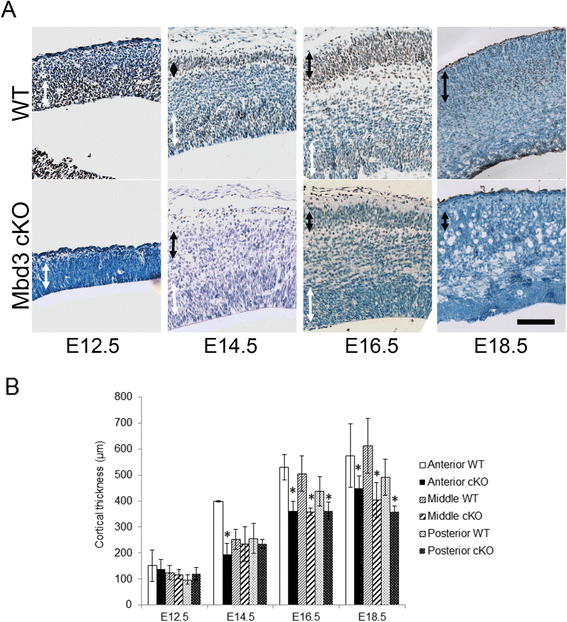
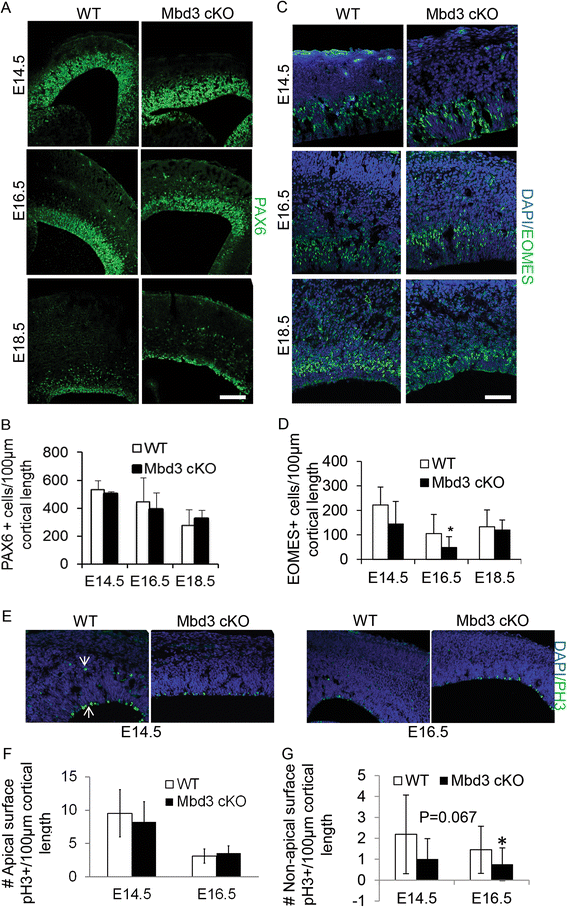

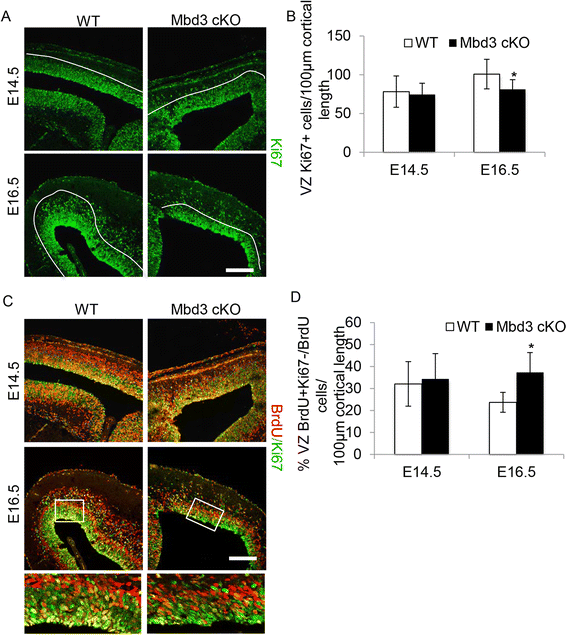


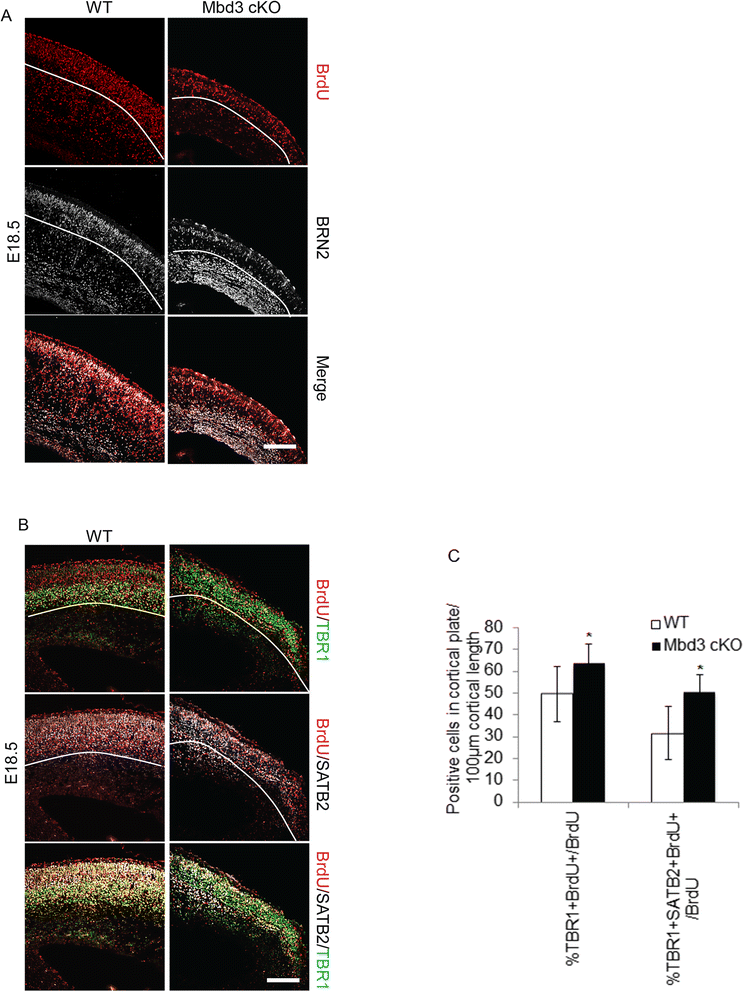

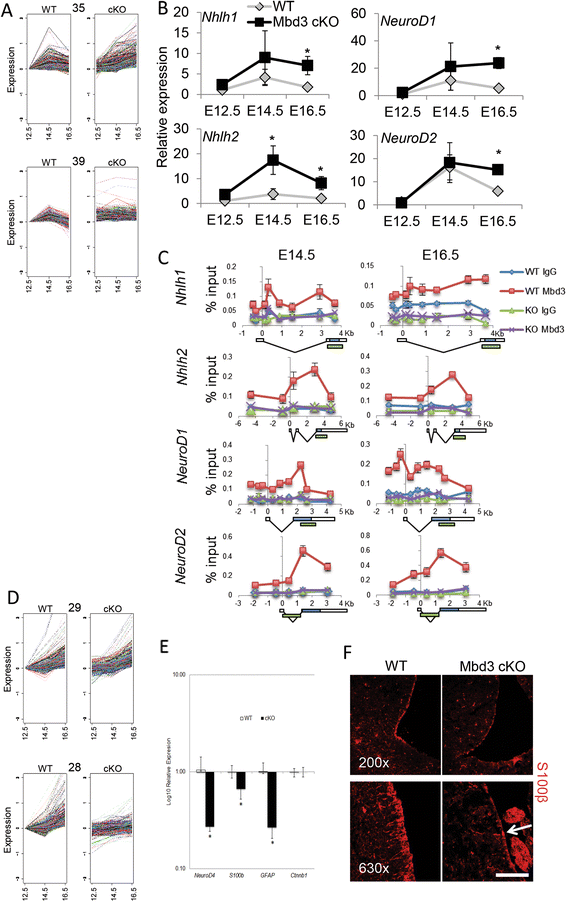
Similar articles
-
The generation of superficial cortical layers is regulated by levels of the transcription factor Pax6.Cereb Cortex. 2011 Jan;21(1):81-94. doi: 10.1093/cercor/bhq061. Epub 2010 Apr 22. Cereb Cortex. 2011. PMID: 20413449 Free PMC article.
-
The level of the transcription factor Pax6 is essential for controlling the balance between neural stem cell self-renewal and neurogenesis.PLoS Genet. 2009 Jun;5(6):e1000511. doi: 10.1371/journal.pgen.1000511. Epub 2009 Jun 12. PLoS Genet. 2009. PMID: 19521500 Free PMC article.
-
Smek promotes corticogenesis through regulating Mbd3's stability and Mbd3/NuRD complex recruitment to genes associated with neurogenesis.PLoS Biol. 2017 May 3;15(5):e2001220. doi: 10.1371/journal.pbio.2001220. eCollection 2017 May. PLoS Biol. 2017. PMID: 28467410 Free PMC article.
-
Regulation of gene expression by Pax6 in ocular cells: a case of tissue-preferred expression of crystallins in lens.Int J Dev Biol. 2004;48(8-9):829-44. doi: 10.1387/ijdb.041866ac. Int J Dev Biol. 2004. PMID: 15558475 Free PMC article. Review.
-
Concise review: Pax6 transcription factor contributes to both embryonic and adult neurogenesis as a multifunctional regulator.Stem Cells. 2008 Jul;26(7):1663-72. doi: 10.1634/stemcells.2007-0884. Epub 2008 May 8. Stem Cells. 2008. PMID: 18467663 Review.
Cited by
-
ATP-dependent chromatin remodeling during mammalian development.Development. 2016 Aug 15;143(16):2882-97. doi: 10.1242/dev.128892. Development. 2016. PMID: 27531948 Free PMC article. Review.
-
The Nucleosome Remodelling and Deacetylation complex coordinates the transcriptional response to lineage commitment in pluripotent cells.Biol Open. 2024 Jan 15;13(1):bio060101. doi: 10.1242/bio.060101. Epub 2024 Jan 22. Biol Open. 2024. PMID: 38149716 Free PMC article.
-
Methyl-CpG-Binding Protein MBD1 Regulates Neuronal Lineage Commitment through Maintaining Adult Neural Stem Cell Identity.J Neurosci. 2017 Jan 18;37(3):523-536. doi: 10.1523/JNEUROSCI.1075-16.2016. J Neurosci. 2017. PMID: 28100736 Free PMC article.
-
The Nucleosome Remodelling and Deacetylation complex suppresses transcriptional noise during lineage commitment.EMBO J. 2019 Jun 17;38(12):e100788. doi: 10.15252/embj.2018100788. Epub 2019 Apr 29. EMBO J. 2019. PMID: 31036553 Free PMC article.
-
Histone-binding protein RBBP4 is necessary to promote neurogenesis in the developing mouse neocortical progenitors.eNeuro. 2024 Nov 26;11(12):ENEURO.0391-23.2024. doi: 10.1523/ENEURO.0391-23.2024. Online ahead of print. eNeuro. 2024. PMID: 39592227 Free PMC article.
References
Publication types
MeSH terms
Substances
Grants and funding
LinkOut - more resources
Full Text Sources
Other Literature Sources
Molecular Biology Databases
Miscellaneous

